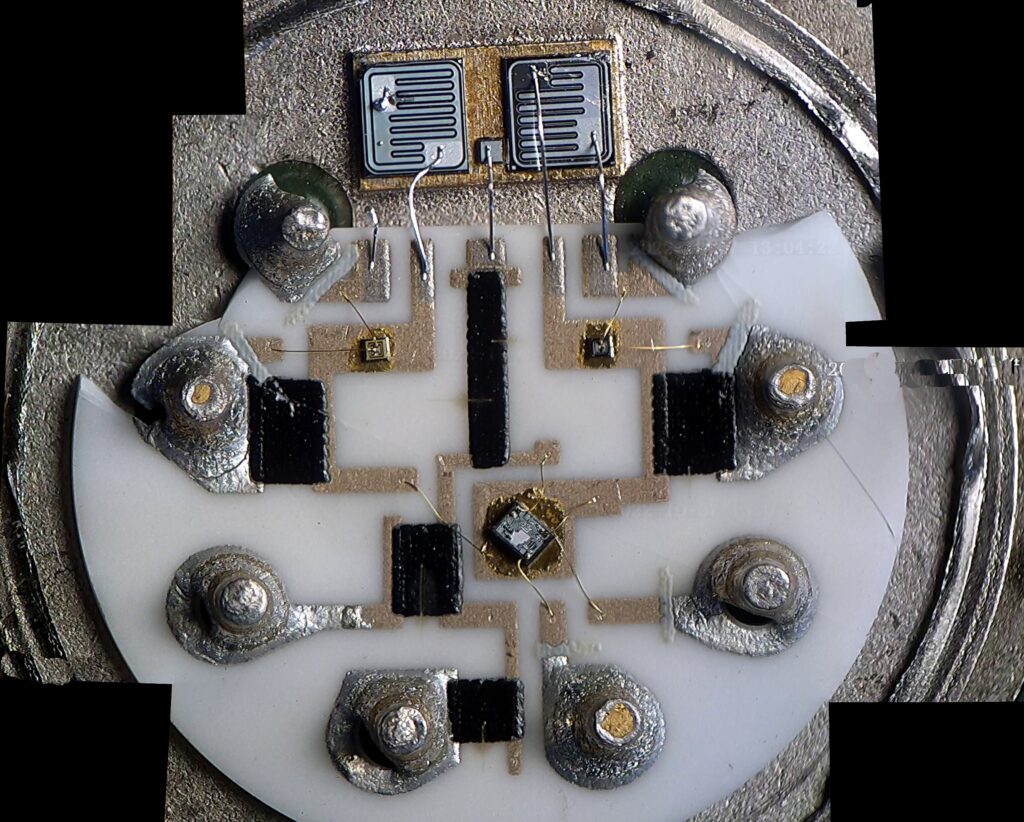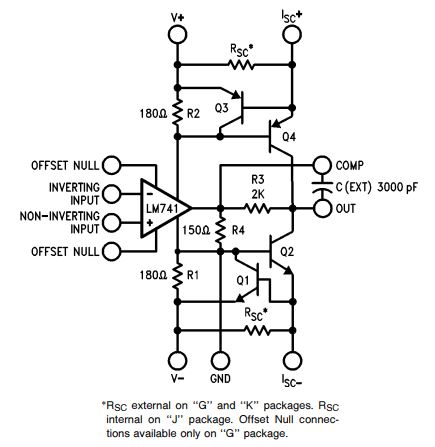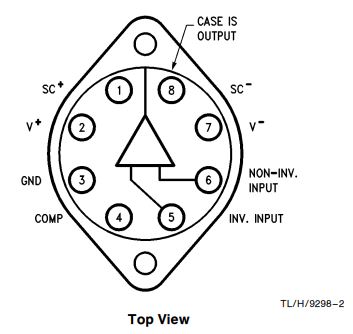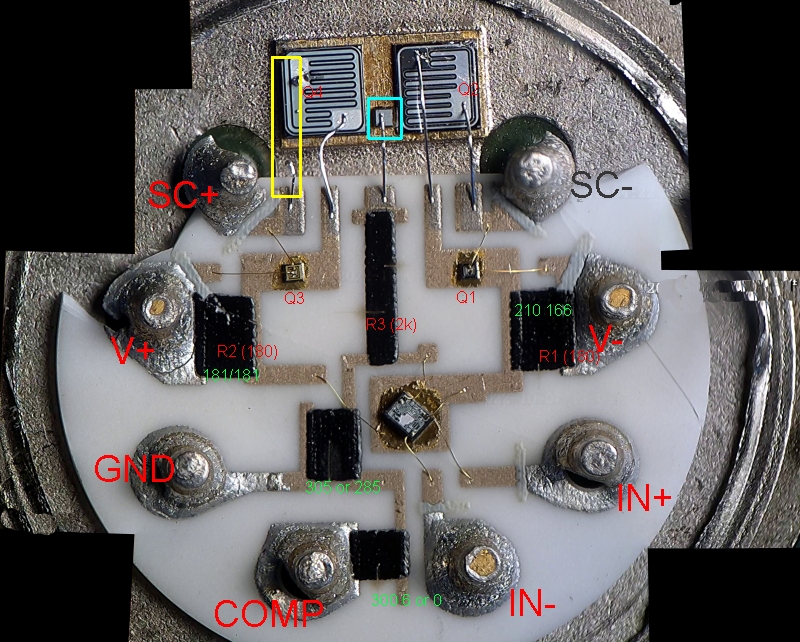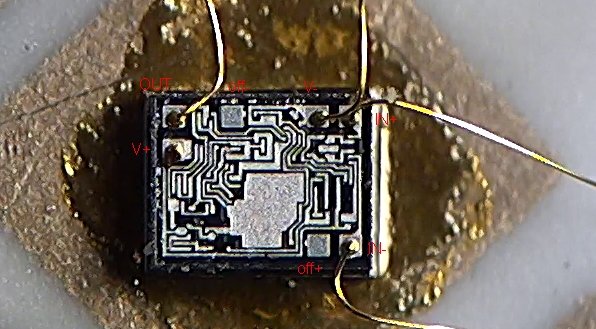From an earlier test equipment repair, I had two broken LH0021CK power amplifiers, both died because of a design issue with an YIG driver board (lacking distance of a heat sink from a board trace leading to an occasional short circuit).
The LH0021CK are +-12V output, +-18V input, 1 Amp capable devices, and if treated nicely, they will last 40+ years of service. Still available today, despite being obsolete, at prices ranging from 10 to 300 EUR a piece. These were quite common parts in high-end controllable power supplies, servo drivers for scientific instruments, and similar apparatus.
Finally, I cracked these open – not anticipating the fragile ceramic substrate inside.
I pieces together a picture from multiple images, because this part is a little too large for my microscope, and too small for other cameras to see it clearly.
The datasheet provides an internal circuit diagram, but is there really a 741 opamp inside? What about all these resistors?
Checking the parts, indeed, there are 4 discrete transistors, laser-tuned resistors (you can see the burn lines of the laser to adjust the value of the resistor in processing of the circuit, some have even two tuning lines), and an opamp die.
Eventually, I opened two of the broken parts, an old one, golden case, and a newer one, silver case, both made by National Semiconductors. There are some small differences of these parts, also related to the circuit. The resistance values are rather similar, but the newer part (shown in the picture) has an additional resistor at the COMP input. Both parts have no connection of GND to the negative supply input of the opamp – this is apparently a mistake in the schematic shown in the datasheet, because the circuit wouldn’t work if there is such connection.
The newer part seems to have a small diode chip (marked light blue), but checking it just gave a 0 Ohms value. Maybe just spacer for wire bonding.
The failure mode is clear for both parts – the SC+ bond wire is blown (with molten ends clearly visible), and the Q4 power transistor shot.
Clearly this part could save a lot of space in the old days, replacing it with discrete parts would take about 5 times the space (1 large TO-3 NPN, 1 large TO-3 PNP, 2 transistors, one TO-99 Opamp, and several resistors…. I have been successfully replacing these parts with TDA2030A audio amplifiers, they seem to be be a good substitute, even if they may lack some detail performance characteristics (eventually, the TDA2030A has even higher power and better bandwidth, say, 100 kHz vs. 20 kHz).
Some detail study of the opamp die showed that it is indeed a National Semiconductor part, 741H printed on it, and the shape of the capacitor (the light colored silver area in the middle) is the shape of the typical National 741.

